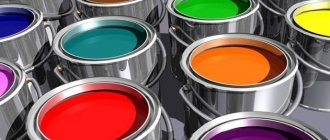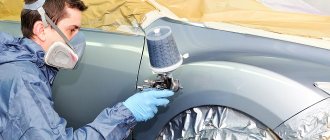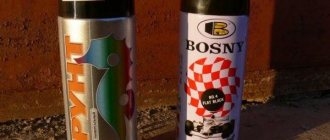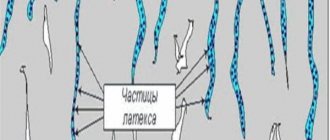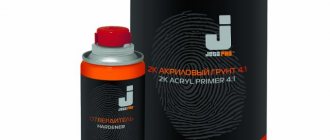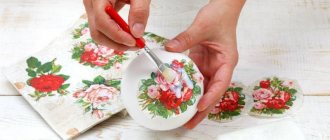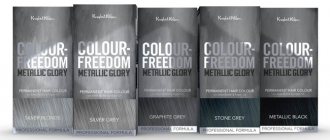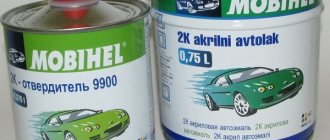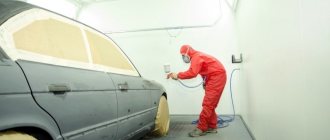Quartz soil firmly adheres the surface to finishing materials, maintaining the smoothness and uniformity of the coating itself. This is especially true when decorating smooth concrete walls, for example, with Venetian plaster.
This is a mixture of water-dispersed acrylic components that can be worked with even in closed, unventilated areas. The composition is odorless, vapor permeable. Not afraid of exposure to moisture and bacteria. The mixture dries quickly, forming a durable, invisible film.
What is it needed for
Quartz primer is used to treat smooth and porous surfaces of chipboard, plaster and concrete. The result is a rough layer with increased adhesive properties. The composition with quartz filler is suitable for treating wood surfaces. The created roughness firmly fixes the finishing finish for walls, such as ceramic tiles or plaster.
Adhesive primer is necessary if the finishing will be applied in a thick layer, about 2-4 cm. For walls with heavy finishing materials, a special mesh is additionally used.
The most effective composition:
- when leveling walls and eliminating minor defects on the surface;
- to reduce the consumption of finishing materials (plasters);
- to give roughness to concrete and monolithic coatings.
If you add sodium silicate to the solution, you can create a translucent protective coating. The primer contains a large percentage of water, so the applied layer takes a long time to dry.
If it is used for outdoor work, it is necessary to exclude exposure to precipitation and temperature changes (until it dries completely).
Application
Since the primer with quartz filler is a non-toxic product and does not contain a solvent, it can be applied to walls indoors, there is no need to ventilate the room. It is allowed to work with this type of primer in a wide temperature range; most mixtures that can be bought in the store can be used at temperatures from +5 to +30 degrees. Do not apply to frozen walls or at sub-zero temperatures.
When working with this liquid, you need to remember the following:
- the acrylic components of this primer dry quite slowly, about 12 hours, so if the composition is used in a closed room, for example, in a bathroom or toilet, the air humidity will increase significantly;
- This composition can be applied with a wide brush or brush; you cannot use spray guns or spray guns, since they have very small outlet holes that will quickly become clogged with fine sand from the mixture, and they are difficult and long to clean;
- Before using the material, you need to read the instructions and also calculate the consumption of quartz primer. We must not forget that the consumption of this mixture is always greater than that of other traditional primer compositions. Usually the approximate consumption is indicated by the manufacturer on the packaging;
- The surface can be treated in one layer, because the material has a fairly high viscosity index.
Before applying the composition to the surface, the walls must be thoroughly cleaned of old finishing materials, dust, dirt and greasy stains. If there are areas of finishing on which the materials do not adhere firmly, they must be removed and removed. This can be done with a regular wire brush or spatula.
We recommend reading! How can you remove primer from various surfaces?
When the old finish is removed, it is necessary to remove dust; this can be done, for example, with a vacuum cleaner or a damp cloth.
The primer can be applied with a brush or roller. If the walls are very high, you can use a ladder or a roller with a long handle.
Before treating the surface, the quartz soil must be thoroughly mixed, since sand tends to settle at the bottom; a construction mixer or an ordinary stick can be used for mixing. Stirring must be repeated every 20-30 minutes, because the filler gradually settles. During application, drops of solution and drips must be removed. Do not allow the liquid to get into your eyes; during application, splashes will fly around the room, so first you need to protect your eyes with any glasses.
Advantages
The product is suitable for outdoor and indoor use.
- Increases adhesion (adhesion strength) of the surface to finishing materials;
- minor defects and color differences on the surface are eliminated;
- the consumption of finishing materials is reduced;
- a rough coating is formed that is easily and evenly applied;
- used to protect the facade before the start of winter.
The primer mixture improves the absorbency of the treated coatings.
Primer selection
The primer applied under decorative plaster can be divided into several categories:
- alkaline, acidic or neutral;
- various indicators of adhesive properties;
- different viscosity of the composition;
- suitable for a certain type of plastering.
If there are many external defects on the walls, such as rust stains, salt deposits, and others, then you need to purchase primer with a high alkaline composition, the pH of which is 8 or more, to hide these defects you need to use a deep penetration primer. This mixture neutralizes any salts, even very deep ones. Rust must be removed, as it reduces the adhesion rate, destroys the wall and the primer if the mixture is chosen incorrectly. Low pH soils are suitable for application inside buildings where air humidity is low. In this case, the soil consumption will be much less than outside the house.
Compound
Soil with quartz sand consists of:
- made of acrylic and latex components, which ensures the retention of mixtures on moistened walls;
- antiseptics and bactericidal (fungicidal) additives, which are needed for treating rooms with high humidity (mold protection);
- alkyd resin additives for uniform consistency;
- coloring pigments (titanium dioxide).
The base is a water-dispersion base with fine-crystalline sand. Often used for an original external effect. By adding color additives, the primer can acquire the desired shade. The façade primer may have additional additives that promote deeper penetration or strengthen the surface itself.
How to choose soil
Let's look at the main types of primer solutions and their features:
- Universal. This acrylic-based material can be used on any surface except wood and metal. The composition of this primer provides increased adhesion, improved strength and protection against mold (if the composition contains the appropriate additive). Dries quickly and has no unpleasant odor.
- Deep penetration. This impregnation is used mainly on loose and crumbling plasters. Penetrating deeply into the pores, the solution slightly strengthens the wall and increases its water-repellent properties. This material dries quickly and does not have a strong odor.
- Adhesive soil type concrete contact. It allows you to significantly improve the adhesion of materials due to quartz sand in the composition. After the primer solution dries, a rough surface with good adhesion is formed. This is required when leveling concrete walls with gypsum plaster, when gluing tiles to drywall, as well as when finishing smooth materials, such as fiberboard, OSB boards, etc.
These are the main three types of primers used for interior work to treat walls before plastering and puttying.
Difference from concrete contact primer
| Quartz soil | Concrete contact |
| Works better on smooth and impervious surfaces, such as glass, tiles, metal surfaces, oil-based paints) | Suitable for smooth but porous products, such as concrete or plasterboard, and chipboards. Not recommended for metals, glass and tiles. |
| Cannot be a finishing layer. | Can be used as a topcoat if 2-3 layers are applied. |
| It is allowed to color the composition to identify it, but the tinting itself is not used. | Tinting during use is acceptable. |
| The proportion of binding components predominates over coloring pigments. Does not contain titanium white. | Some pigment additives exceed the amount of binders. |
| Filler fractions are possible from 0.3 to 0.6 mm | You can find brands that contain fractions up to 0.2 mm |
Quartz primers are used at positive air temperatures (from +5 to +30°C).
Nuances and tips
When working with quartz soil, there are certain nuances that both beginners and experienced craftsmen should remember.
- You cannot use spray bottles to apply the solution, because small particles of the suspension will clog the holes of the spray gun.
- The best time of year for repairs is summer, given the optimal climatic conditions for drying the mixture.
- Do not treat frozen walls - when thawing, excess moisture will destroy the soil layer.
- You can dilute the solution with water in an amount of 10% of the total mass.
On average, 10 liters of soil is enough to treat about 40 square meters of walls.
Application
The use of a primer based on quartz sand requires compliance with the rules.
- A roller or wide, thick brushes are used instead of spray guns and spray guns (sand fractions can clog holes).
- Priming work is carried out at a temperature not lower than +5°C.
- The solution must be thoroughly mixed at least every 25-30 minutes.
- It is necessary to clean the surface of all excess (with a spatula, wire brush, rag, vacuum cleaner).
If necessary, water can be added to the primer, but it should not be more than 10% of the total composition.
You cannot prime the walls if contact with moisture or direct sunlight is expected within 1-2 days.
To work with ceilings, when a thick layer of primer (about 5 mm) is needed, mesh reinforcement of the surface is first used.
When working with drywall, a multi-layer coating is recommended, for example, quartz primer - putty - quartz primer - paint layer. Before starting, check the instructions on the package. The primer may take about 12 hours to dry.
Quartz soil - Consumption and application
The use of quartz primer is especially important for smooth but porous surfaces that require the application of a thicker layer - sometimes up to 20-30 mm. This consumption is slightly higher than for smooth compounds, but this is fully justified by achieving high quality adhesion and reducing the consumption of subsequent coatings. In addition, the good viscosity of quartz soil in most cases allows processing in one layer.
The average consumption rate per 1 m² for a single-layer coating with quartz soil is 0.2 - 0.5 kg/m2. However, this is a very arbitrary value due to the variety of surface structural features of different materials. It is always easier to calculate the consumption experimentally by painting a test square meter.
You need to follow some rules on how to apply quartz primers:
- It is better to work with a brush or roller, as sand fractions can clog the holes of the spray gun or spray gun.
- Mix the solution thoroughly before use and then repeat stirring every half hour.
- Work at a temperature not lower than +5 degrees and under no circumstances treat frozen surfaces (thawed surfaces must be kept for at least a day).
- It is mandatory to thoroughly clean the walls first of everything that can be separated (with a spatula, wire brush) and of dust (vacuum cleaner, rag).
- If desired, you can add up to 10% water to the initial solution.
You should not treat ceilings unless specifically instructed to do so in the instructions. Sometimes a particularly thick (0.5 cm) layer is required to create a special finish. In this case, preliminary mesh reinforcement of the walls is recommended.
When working with plasterboard walls, a multi-layer coating will be especially durable: quartz primer - putty layer - quartz primer - paint and varnish material.
Many foreign and domestic manufacturers produce quartz soils without revealing all the secrets of their own technologies. However, their prices do not differ much from the general cost of modern primers.
At first glance, the costs may seem considerable, but you need to keep in mind that using quartz soil you can:
- Significant savings on subsequent coatings;
- on average, 10 liters of soil is enough to cover 40 m² of smooth surface!
Table 2. Examples of popular quartz soils.
table 2
As you can see, even for universal quartz primers, the scope of which is much wider than interior wall decoration, the price changes slightly.
Famous brands
- Alpina Expert. Can be used outdoors and indoors.
- Ceresit CT 16. For interior and exterior use. Suitable for treating old paintwork surfaces.
- Ozon. Used when working with heat-insulating systems.
- Goodhim G.K. Universal composition. Apply to old paintwork.
- BiTex. Used for ceilings and as a leveler for floor coverings.
- Caparol Sylitol-Minera. The composition contains potassium liquid glass, this is a reliable structural basis for the base.
In addition to technical characteristics and price, the storage conditions of the primer are taken into account. The air temperature should not fall below +5°C.
There are no solvents in such compositions. They are non-toxic and can be applied indoors, without ventilation.
Review of popular manufacturers
Specialized building materials stores offer the following options from well-known manufacturers.
- Cerezit CT-16 - used for finishing work inside and outside, can be applied to old paint.
- Alpina Expert is a universal mixture for surface treatment, including finishing building facades. It is characterized by high cost.
- OZON - produced specifically for thermal insulation systems. Good soil at an average price.
- GOODHIM GK is a cheap, universal mixture that is suitable for walls with old paint.
- BiTex - characterized by versatility; used not only for side surfaces, but also for ceilings and floors.
- Axton quartz soil is highly safe due to the content of organic components;
- Nevel gold highly covering quartz soil does not lose its active properties over five freezing cycles.
A wide selection of soils with quartz allows you to improve the quality characteristics of surfaces and increase their service life.
Nuances and tips
When working with quartz soil, there are certain nuances that both beginners and experienced craftsmen should remember.
- You cannot use spray bottles to apply the solution, because small particles of the suspension will clog the holes of the spray gun.
- The best time of year for repairs is summer, given the optimal climatic conditions for drying the mixture.
- Do not treat frozen walls - when thawing, excess moisture will destroy the soil layer.
- You can dilute the solution with water in an amount of 10% of the total mass.
On average, 10 liters of soil is enough to treat about 40 square meters of walls.
The best soils for an aquarium
High-quality nutrient soil for an aquarium can be bought in almost any specialized store, but not all compositions are really good. Experienced aquarists recommend choosing one of these models:
JBL Manado
This German brand provides a wide selection of substrates for aquariums and terrariums. There are options for tropical and freshwater fish, as well as beige and black substrates. Black soil is considered one of the best. It can be used in both aquariums and terrariums. The product is neutral acidity, so it will not disturb the aquarium ecosystem. The most popular package weighs 2.4 kg and is designed to fill a tank with a volume of 20 liters or more. The substrate is produced in a durable bag made of dense polyethylene, so it will definitely not tear during transportation.
| Type | Natural |
| Compound | Gravel |
| Fraction size | 3-5 mm |
pros
- ideal for rapid establishment of aquatic vegetation;
- does not contain artificial colors;
- does not release toxic compounds and chemicals into the water;
- makes the color of the fish brighter;
- universal use: suitable for freshwater and tropical aquariums.
Minuses
- low packaging weight;
- Black primer is not always available for sale.
Review: “I’ve long wanted to buy black primer for an aquarium, but I couldn’t find it. In the end I ordered it online. Surprisingly, in such an aquarium the fish look brighter and the plants are greener. I recommend".
ZOLUX Aquasand Nature Quartz Gros
The manufacturer Zolux also produces a wide selection of natural soils for arranging aquariums of various themes. The line includes sand and gravel substrates. They have a natural color and not only set off the bright color of the fish, but also allow you to recreate their natural habitat. For a small 25 liter aquarium, a small package of soil weighing a little more than 4 kg will be sufficient. This soil is not suitable for terrariums.
| Type | Natural |
| Compound | Gravel |
| Fraction size | 3-5 mm |
pros
- universal fraction size suitable for planting aquatic vegetation;
- does not cake even after prolonged use;
- highlights the bright color of the fish;
- does not contain harmful substances;
- comes in durable packaging.
Minuses
- not always on sale;
- Suitable for aquariums only: cannot be used in a terrarium.
Review: “We bought this soil on the advice of the seller, since we don’t understand the details of soil selection. It goes on the bottom evenly and really doesn’t cake.”
UDeco River Amber
One of the best soils for setting up an aquarium. It is absolutely natural and consists of small polished stones of various rocks. The composition of the substrate is balanced, so it does not change the acidity and does not increase water hardness. To ensure that the soil is evenly distributed over the bottom and does not cake, the manufacturer recommends using a volcanic lava substrate. Soil from this manufacturer is provided in packages weighing 3.3 or 9.9 kg. This amount is enough to fill an aquarium of 30 liters or more.
| Type | Natural |
| Compound | Amber gravel |
| Fraction size | From 0.1 to 5 mm (depending on model) |
pros
- does not change the composition of the water in the aquarium;
- Suitable for creating tropical and freshwater aquariums;
- wide selection of fraction sizes for different types of fish;
- durable packaging made of transparent material allows you to evaluate the soil before purchasing;
- affordable price.
Minuses
- Before use, the soil must be thoroughly washed, otherwise it will contaminate the water;
- difficult to find on sale, easier to order in an online store.
Review: “Very good soil, I recommend it to everyone. It is absolutely natural, does not affect the water in any way, and the aquarium looks like an untouched corner of nature.”
Prime
The manufacturer Prime produces several types of aquarium soils. On sale you can find black, blue, white, lilac and even orange substrate. Despite the bright color, the soil does not contain compounds dangerous to fish, and after filling the tank it does not change the composition of the water and does not disturb the microclimate. The packaging of the product may also be different, but the fraction is universal and suitable for most types of fish and aquatic vegetation. Experienced aquarists recommend buying black or white substrate, as it does not change the color of the fish.
| Type | Natural |
| Compound | Natural stone |
| Fraction size | 3-5 mm |
pros
- wide choice of colors;
- resistant to direct sunlight and carbon dioxide;
- does not change the acidity of water;
- Suitable for both freshwater and marine aquariums;
- Safe natural dyes are used to add color.
Minuses
- not all users like bright soil colors;
- there is no soil with a very fine or coarse fraction.
Review: “I didn’t dare buy the blue and orange substrate. I took the black one. The aquarium looks really luxurious and the fish seem to look brighter.”
Tetra ActiveSubstrate
A distinctive feature of this soil is that it is intended for filling aquariums in which bottom-dwelling fish live. All soil components are absolutely natural, do not change the acidity of the soil and do not harm the health of underwater inhabitants. In addition to soil for bottom fish, the manufacturer also produces other types of soil with a large fraction size, so each aquarium owner will be able to choose the appropriate type of substrate. Tetra primers are available in packages from 3 to 10 kg, so it will not be difficult to arrange even a large tank.
| Type | Natural |
| Compound | Clay |
| Fraction size | Up to 0.1 mm |
pros
- 6 kg packaging is enough to fill a large 60 liter aquarium;
- affordable price;
- easy to find on sale;
- there is a wide selection of other substrates for different types of fish;
- does not change the composition of water and does not increase its acidity.
Minuses
- cakes quickly;
- Suitable only for aquariums with bottom-dwelling fish.
Review: “Only catfish live in my aquarium, so I always buy this kind of soil. Yes, it cakes, but I haven’t found a better option for my fish yet.”
Dennerle DeponitMix Professional
Nutrient soil from this manufacturer was specially created for effective rooting and rapid growth of aquatic vegetation. It contains iron in the form of a chelate, which gives the leaves a rich green color. The substrate consists of quartz sand, gravel, clay minerals and peat. Due to this, the soil creates an optimal microclimate in the aquarium and does not harm the health of fish, crabs, mollusks and other aquatic inhabitants. The substrate is produced in containers made of durable plastic, so it is not damaged during transportation.
| Type | Natural |
| Compound | Clay, sand, gravel, peat |
| Fraction size | 3-5 mm |
pros
- the special composition ensures high-quality nutrition and rapid rooting of plants;
- the neutral color of the soil emphasizes the bright colors of the fish;
- does not change the acidity of water;
- does not emit chemical compounds and toxic substances;
- improves the overall microflora in the aquarium.
Minuses
- high price;
- can be found for sale only in large pet stores.
Review: “I can say with confidence that this soil, although expensive, fully justifies its price. The plants look natural, the fish feel great, and the acidity of the water does not increase. I recommend".
ISTA Aquarium Substrate Premium Soil
Nutrient soil for aquariums with optimal acidity. It can be used to fill freshwater aquariums and ornamental shrimp tanks. The substrate is produced in a soft bag made of dense material and tolerates transportation well. The granules are porous, painted in a neutral natural color, suitable for rooting aquatic vegetation. The soil does not change the acidity of the water in the tank, does not cake and does not release toxic substances that can harm the inhabitants.
| Type | Natural |
| Compound | Quartz gravel |
| Fraction size | 3-5 mm |
pros
- the nutritional components in the composition accelerate the rooting and growth of plants;
- highlights the bright color of the fish;
- convenient and durable packaging;
- suitable for aquariums with marine life;
- does not cake even after prolonged use.
Minuses
- high cost in comparison with domestic analogues;
- not always on sale.
Review: “I agree that you can find cheaper soil, but I like this soil both in appearance and to the touch. I specially measured the acidity and hardness of the water: it does not change after replacing the soil.”
Barbus
A distinctive feature of this manufacturer’s soil is that it is produced in a wide variety of compositions. Each model is designed to fill an aquarium with a specific type of fish. For example, the "Kariba" substrate consists of fine gravel and is painted white. This allows you to recreate the ecosystem of tropical seas and highlight the bright colors of the fish. Another type of soil, “Caspian”, consists of medium-sized pebbles. This soil is not suitable for rooting aquatic vegetation, so it is usually supplemented with soil with a finer particle size.
| Type | Natural |
| Compound | Pebbles, gravel |
| Fraction size | 3-5 or 5-10 mm (depending on model) |
pros
- a wide selection of soils for aquariums of various themes;
- reliable domestic manufacturer;
- affordable price;
- only natural ingredients in the composition;
- There is a choice of soils according to the size fraction.
Minuses
- small packaging volume;
- Some varieties of soil are difficult to find commercially.
Review: “I am a real fan of aquariums. I have three of them at home, all with different fish. I only buy this kind of soil, since certain varieties of it are created for certain types of fish.”
ArtUniqColor
Aquarium soil from this brand is also available in a wide range. For example, to set up a freshwater aquarium with bottom fish, you can buy decorative swamp soil, and for a tropical one, soils of unusual color are suitable. Despite the fact that all brand substrates are painted in unusual colors, they are absolutely safe for underwater inhabitants. The dyes are completely natural, do not fade under the influence of direct sunlight, do not change the acidity of water and do not emit toxic substances. The fraction size is the same for all varieties and is more suitable for decorative purposes than for rooting plants.
| Type | Natural |
| Compound | Quartz sand |
| Fraction size | 1-2 mm |
pros
- wide selection of colors for decoration;
- only natural ingredients in the composition;
- does not change the acidity level of water;
- does not cake;
- affordable price.
Minuses
- not suitable for rooting plants;
- not always on sale.
Review: “If you want to plant some kind of plant, this soil will not work. The fraction is too small. But this soil is ideal for decorative purposes.”
Dennerle Nano Garnelenkies
The primer from this manufacturer is available in several colors, but they are all neutral and perfectly set off the bright colors of the fish. You can find black, light gray and brown soil on sale. The product was created specifically for small aquariums. The fraction size is small, so in large tanks the soil will quickly cake. The substrate is made from natural ingredients and will not harm underwater inhabitants.
| Type | Natural |
| Compound | fine gravel |
| Fraction size | 0.7-1.2 mm |
pros
- only natural ingredients in the composition;
- neutral colors highlight the beauty of fish and underwater plants;
- goes well with primers from other manufacturers;
- ideal for small aquariums;
- does not change the acidity and hardness of water.
Minuses
- not suitable for large aquariums;
- cannot be used for rooting plants.
Review: “The soil is shallow, but I personally like it. I use it to fill the spaces between large boulders.”
